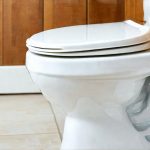Personal hygiene is a deeply ingrained aspect of daily life, yet cultural norms significantly shape how we approach it. For generations, toilet paper has been the dominant method for post-toilet cleaning in many parts of the world, particularly in North America and some regions of Asia. However, as awareness grows about alternative methods offering improved cleanliness and environmental benefits, bidets – once considered a luxury item – are experiencing a surge in popularity. This shift prompts an important question: should women specifically consider using bidets for better hygiene? The answer isn’t simply ‘yes’ or ‘no’, but rather a nuanced exploration of the physiological differences, health considerations, and practical advantages that make bidets potentially beneficial, especially for those who menstruate, experience urinary tract issues, or have undergone gynecological surgery.
The conversation around bidet usage often centers on cleanliness, and rightfully so. While toilet paper can effectively remove visible waste, it rarely achieves complete cleaning, leaving residue behind. This incomplete cleansing can contribute to bacterial growth, irritation, and even infections. For women, this is particularly relevant due to the anatomical differences that make them more susceptible to urinary tract infections (UTIs) and vaginal infections. The proximity of the urethra to the anus means that bacteria from fecal matter can easily migrate, increasing the risk of UTIs. Additionally, the delicate skin in the perineal area requires gentle cleaning; harsh wiping with dry toilet paper can cause micro-tears and irritation, further compromising the protective barrier against infection. Understanding these vulnerabilities is crucial when evaluating whether a bidet could be a beneficial addition to one’s hygiene routine. If you’re concerned about recurrent infections, consider learning more about should women use probiotics.
The Physiological Basis for Enhanced Hygiene
Women’s anatomy differs significantly from men’s, creating unique hygiene considerations. The shorter urethra in women increases their susceptibility to UTIs, as mentioned previously. This makes maintaining optimal cleanliness around the perineum essential. Traditional wiping methods can often spread bacteria from the rectal area to the urethral opening, directly contributing to infection risk. Bidets offer a solution by providing gentle, directed water cleansing that minimizes this bacterial transfer. The stream of water effectively washes away fecal matter and potential pathogens without the abrasive friction associated with toilet paper.
Furthermore, hormonal fluctuations throughout a woman’s life – during menstruation, pregnancy, and menopause – can significantly impact vaginal pH levels and skin sensitivity. These changes often lead to increased susceptibility to irritation and infection. A bidet’s gentle cleansing action provides relief from discomfort and supports overall vaginal health by maintaining cleanliness without disrupting the delicate balance of the microbiome. It also helps remove menstrual blood more effectively than toilet paper alone, reducing odor and promoting a feeling of freshness. The ability to adjust water pressure and temperature adds another layer of personalization, allowing for customized comfort levels depending on individual sensitivity. For those experiencing frequent UTIs, understanding how often should women be screened is also important.
Bidets aren’t just about preventing infections; they can significantly improve comfort. Many women experience discomfort or even pain from aggressive wiping, especially during menstruation or after childbirth. The gentle cleansing offered by a bidet eliminates this friction and provides soothing relief. This is particularly important for individuals with conditions like hemorrhoids or anal fissures, where even mild pressure can cause significant pain. The result is not only improved hygiene but also enhanced well-being and quality of life.
Bidets and Menstrual Hygiene
Menstruation presents a unique set of hygiene challenges that bidets are exceptionally well-suited to address. Traditional methods often involve using excessive amounts of toilet paper to manage menstrual flow, which can be both wasteful and ineffective at achieving complete cleanliness. The resulting friction can also exacerbate irritation during menstruation when the pelvic area is already more sensitive. Bidets offer a superior alternative by providing thorough cleansing without abrasion.
- They effectively remove menstrual blood from the perineal area, reducing odor and preventing staining of underwear.
- Adjustable water pressure allows for comfortable cleaning even during heavy flow days.
- The hygienic benefits extend to minimizing bacterial growth associated with prolonged contact between menstrual fluids and skin.
Many modern bidets include features like feminine wash settings specifically designed for gentle cleansing of the vulva. These settings typically utilize a softer spray pattern and lower water pressure, ensuring maximum comfort and hygiene. Integrating bidet use into one’s menstrual routine can lead to a significant improvement in overall well-being during this often challenging time. You may also want to explore should women change wiping habits for additional preventative measures.
Postpartum Hygiene & Recovery
The postpartum period is a particularly vulnerable time for women, requiring extra care and attention to hygiene. Childbirth can cause tearing or episiotomies, creating wounds that are susceptible to infection. Traditional wiping methods can be excruciatingly painful and may impede healing by introducing bacteria into the wound site. Bidets provide a gentle, non-invasive alternative that promotes optimal recovery.
The directed water stream effectively cleanses the perineal area without causing friction or irritation, minimizing the risk of infection and allowing for faster healing. Many healthcare providers now recommend bidet use to women after childbirth specifically for this reason. Furthermore, the added cleanliness can significantly improve comfort levels during a time when even minor discomforts feel amplified. Bidets also help prevent constipation – a common issue postpartum – by providing gentle cleansing that encourages regular bowel movements.
Addressing Common Concerns & Misconceptions
Despite their growing popularity, some misconceptions still surround bidet use. One common concern is the fear of water splashing or creating a mess. Modern bidets are designed to minimize splashing with features like angled nozzles and adjustable water pressure. Additionally, many models offer air dryers, eliminating the need for toilet paper altogether. Another misconception is that bidets are unhygienic. In reality, bidets are more hygienic than traditional wiping methods because they remove waste more effectively and reduce bacterial spread.
- Regular cleaning of the bidet nozzle is essential to maintain hygiene; most models feature self-cleaning functions or easily removable nozzles for thorough disinfection.
- Some women worry about water temperature. Most bidets offer adjustable water temperatures, allowing users to select a comfortable setting.
- Installation can also seem daunting, but many bidet attachments are easy to install without professional plumbing assistance.
Ultimately, the decision of whether or not to use a bidet is a personal one. However, for women, the potential benefits – improved hygiene, enhanced comfort, reduced risk of infection, and support during menstruation and postpartum recovery – make it a compelling consideration. As awareness grows and bidets become more accessible, they are poised to revolutionize feminine hygiene practices and contribute to greater overall well-being. If you’re unsure about symptoms or treatment options, should women use UTI test strips can offer a preliminary assessment.





















